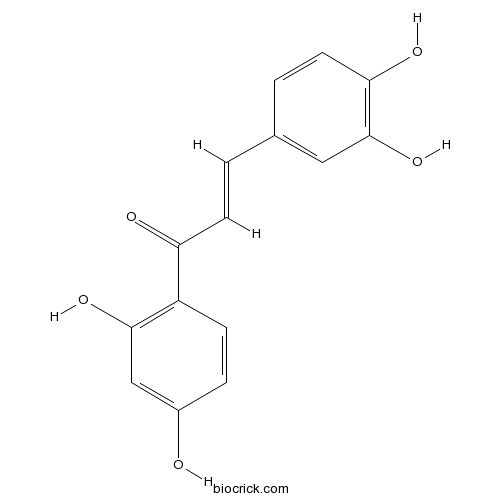Indigofera pseudotinctoria
Indigofera pseudotinctoria
1. The products in our compound library are selected from thousands of unique natural products; 2. It has the characteristics of diverse structure, diverse sources and wide coverage of activities; 3. Provide information on the activity of products from major journals, patents and research reports around the world, providing theoretical direction and research basis for further research and screening; 4. Free combination according to the type, source, target and disease of natural product; 5. The compound powder is placed in a covered tube and then discharged into a 10 x 10 cryostat; 6. Transport in ice pack or dry ice pack. Please store it at -20 °C as soon as possible after receiving the product, and use it as soon as possible after opening.
Natural products/compounds from Indigofera pseudotinctoria
- Cat.No. Product Name CAS Number COA
-
BCN1061
Formononetin485-72-3
Instructions

-
BCN5592
Butein487-52-5
Instructions

Development and characterization of 14 microsatellite markers for Indigofera pseudotinctoria (Fabaceae).[Pubmed: 27144104]
Microsatellite markers can be used to evaluate population structure and genetic diversity in native populations of Indigofera pseudotinctoria (Fabaceae) and assess genetic disturbance caused by nonnative plants of the same species.
Deviation from niche optima affects the nature of plant-plant interactions along a soil acidity gradient.[Pubmed: 26740568]
There is increasing recognition of the importance of niche optima in the shift of plant-plant interactions along environmental stress gradients. Here, we investigate whether deviation from niche optima would affect the outcome of plant-plant interactions along a soil acidity gradient (pH = 3.1, 4.1, 5.5 and 6.1) in a pot experiment. We used the acid-tolerant species Lespedeza formosa Koehne as the neighbouring plant and the acid-tolerant species Indigofera pseudotinctoria Mats. or acid-sensitive species Medicago sativa L. as the target plants. Biomass was used to determine the optimal pH and to calculate the relative interaction index (RII). We found that the relationships between RII and the deviation of soil pH from the target's optimal pH were linear for both target species. Both targets were increasingly promoted by the neighbour as pH values deviated from their optima; neighbours benefitted target plants by promoting soil symbiotic arbuscular mycorrhizal fungi, increasing soil organic matter or reducing soil exchangeable aluminium. Our results suggest that the shape of the curve describing the relationship between soil pH and facilitation/competition depends on the soil pH optima of the particular species.
[Chemical constituents of Indigofera pseudotinctoria].[Pubmed: 21246824]
To study the chemical constituents in the roots of Indigofera pseudotinctoria.


